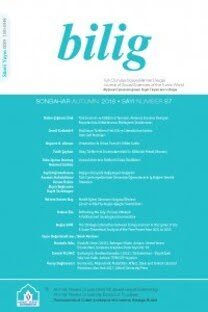Edebiyatta Bedîiyyeler ve Bir Kasîde-i Masnû'a İncelemesi
The "Bedîiyye" in Literature and the Analysis of a "Kasîde-i Masnû'a
___
Değirmençay, Veyis (2003). "İran Edebiyatında Bedî'iyye Veya Kasîde-i Masnû'a", Atatürk Üniversitesi Türkiyat Araştırmaları Enstitüsü Dergisi 22: 55-70.Kepecioğlu, Kâmil (2009). Bursa Kütüğü. C. 3. Bursa: Bursa Büyükşehir Belediyesi.
Kılıç, Hulusi (1992). "Bedîiyyât", DİA İslâm Ansiklopedisi. C. 5: 323-324.
Lâmi'î Çelebi. Dîvân, Süleymaniye Kütüphanesi, Lala İsmail Böl. No .481.
Mehmed Şemseddin (1997). Yâdigâr-ı Şemsî I-II, Haz. Mustafa Kara-Kadir At- lansoy: Bursa: Uludağ Yay.
- ISSN: 1301-0549
- Yayın Aralığı: Yılda 4 Sayı
- Başlangıç: 1996
- Yayıncı: Ahmet Yesevi Üniversitesi Mütevelli Heyet Başkanlığı
The Turkish Press and the Representation of the Armenian Minority during the 1965 Events
XIX. Yüzyıl Ortalarında Bir Osmanlı Kasabasındaki Şahıs Adı Profili
Automated Synonym Dictionary Generation Tool for Turkish (ASDICT)
ÖZLEM AKTAŞ, ÇAĞDAŞ CAN BİRANT, Belgin AKSU, YALÇIN ÇEBİ
Yükselen Tehdit Algısı Karşısında Çin'in Yumuşak Güç Siyaseti: Politikalar ve Sınırlılıkları
M. Turgut DEMİRTEPE, Hasan Selim ÖZERTEM
Edebiyatta Bedîiyyeler ve Bir Kasîde-i Masnû'a İncelemesi
Bilgisayar Bir Metni Vurgulu Okuyabilir mi?
İ. Baran USLU, NURETTİN DEMİR, H. Gökhan İLK, A. Egemen YILMAZ
Kıbrıs Ağzıyla İlgili İki Araştırma
Osmanlı Basınında Mahmud Şevket Paşa Suikastı
Cengiz Aytmatov'un Gün Olur Asra Bedel'inde Kimlik Oluşturma Süreçleri
The Ottoman Travellers' Perceptions of the Far East in the Early Twentieth Century
